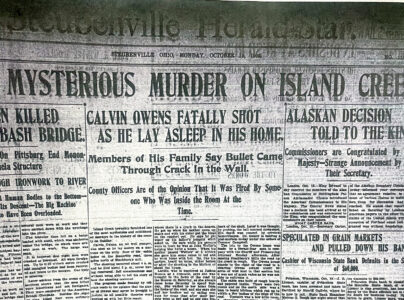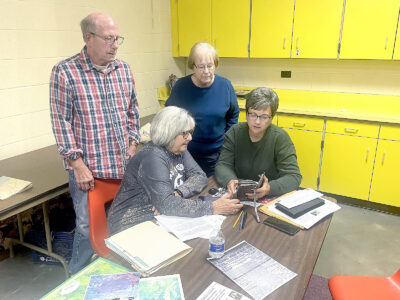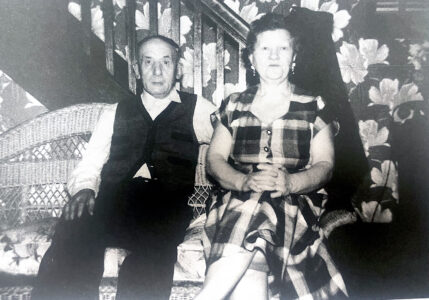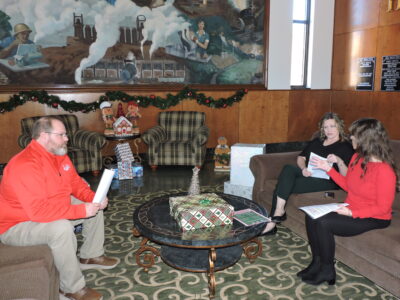Museum to talk legends, folklore of area
Toronto museum to highlight spooky tales of Ohio Valley
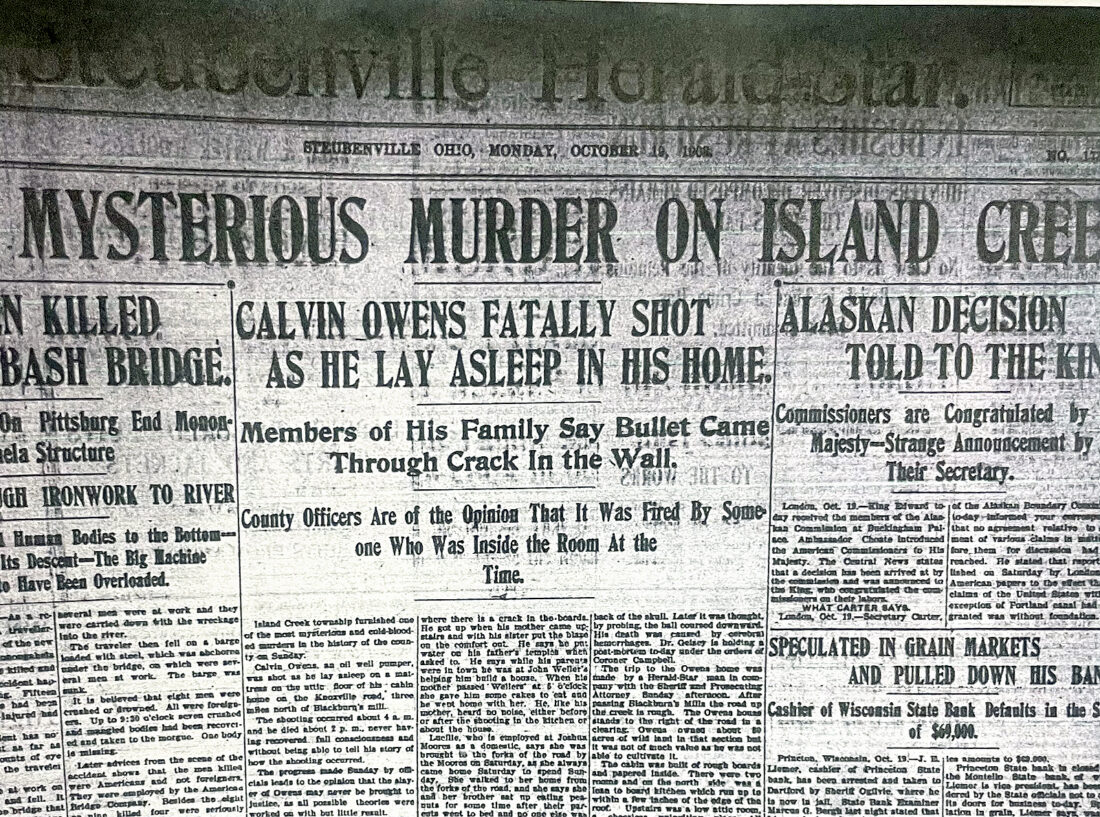
LEGENDS, FOLKLORE AND GHOST STORIES — This Herald-Star clipping from the early 1900s tells the tale of a man who was murdered in his home as he lay sleeping in his cabin in Toronto. This story and others will be discussed during Sunday’s special event at the Main Street Museum in Toronto. -- Julie Stenger
TORONTO — Folklore. Legends. Ghost stories. What better subject is there to talk about during October?
As All Hallow’s Eve quickly approaches, those with the Toronto Historical Society’s Main Street Museum are preparing for an afternoon of conversation surrounding some of the spookiest tales to come out of the Gem City and surrounding areas in the past 200 years.
The stories are true, including the one about a man by the name of Calvin Owens who lived in what was referred to as Dungeons Hollow, or in the area near the Osage Cemetery — the current location that stretches from the road leading to Austin Lake out to where the Toronto Sportsman’s Club is located. A few sparse cabins inhabited the wooded area around the year 1903.
Owens was shot and killed while sleeping in his cabin. The Herald-Star covered the court proceedings for days. And those at the museum will share with the audience just who exactly was convicted of the crime and why, along with if the actual killer was really caught.
What could be scarier than that?
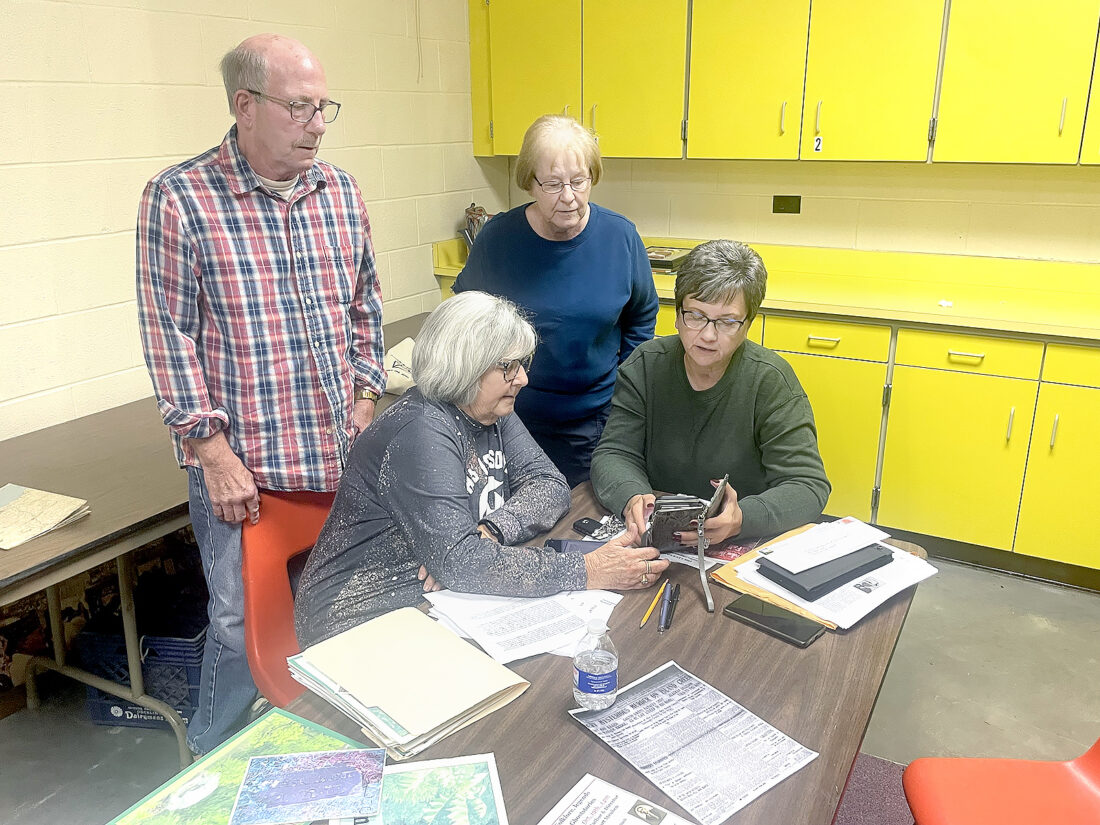
FINAL PREPARATIONS — Officials with the Toronto Historical Society are finalizing plans for the Main Street Museum’s last program of the year, set for Sunday. Taking part in the meeting were, clockwise from top left, Mark Holtzmann, Carolyn Walker, Susan Lawrence and Linda McFarren. -- Julie Stenger
How about the two Toronto Castleman sisters, who were kidnapped back in 1790?
Or perhaps the legend of the Howell Gang? The story of Jerry and Dick Howell, relatives who lived in a house on Loretta Avenue and were well-liked throughout their hometown. And yet … they were actually some very bad boys who robbed, thieved and did far worse crimes during the evenings in cities across the river.
These stories and several smaller ones, including how Brown’s Island is thought to be an Indian burial ground where anyone who ever tried starting something on that piece of land had something tragic occur to prevent it from happening, will be covered during this special presentation.
The event is open to the public and will take place from 1 p.m. to 3 p.m. on Oct. 19.
The program will begin with guest speaker Paul Zuros, director of Historic Fort Steuben.
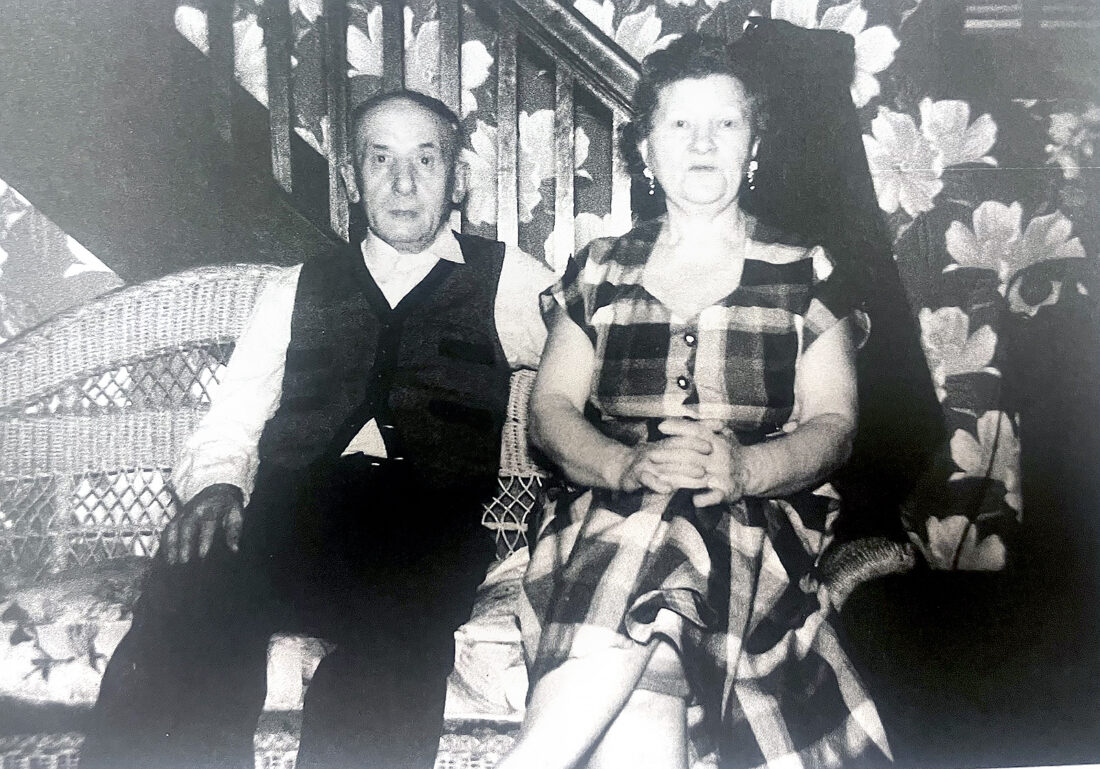
MUSEUM INCLUDES IN DISPLAY LOANS OF IMMIGRANTS’ WORKS — Frank and Julie Grygo were immigrants who met in the Toronto area. They opened a grocery store in town after meeting and marrying by chance. Julie had come to join her husband in the United States but learned he died before she arrived. Her handmade table runners were put on display in the Main Street Museum for visitors to view. -- Contributed
Zuros, who writes his bi-monthly column “History in the Hills” in the Sunday editions of the Herald-Star and The Weirton Daily Times, has written a book entitled, “Historic Tales of the Upper Ohio Valley.”
For the first time, he will be speaking in Toronto at the Main Street Museum, sharing with those in attendance some amazing tales of intriguing events that have happened in our area, along with stories about events that have resulted in mysterious outcomes.
Zuros stated he is hoping for a good crowd at the museum, which is located inside the Karaffa Recreation Center on Dennis Way in Toronto.
“I am very excited to speak in Toronto, especially about this topic,” Zuros commented. “I have always been interested in the folklore of ghost stories and getting together to talk about this topic is exciting to me.”
“I have been very interested to learn about local ghost stories, too,” Zuros continued. “I have tried to collect stories like this especially to feature in my column ‘History in the Hills.’ I like this time of year because it gives me an opportunity to research this topic and write about it.”
“I will be talking about several local stories from all over our area — from Cross Creek to downtown Steubenville, Weirton and Hancock County,” he stated. “I don’t want to give a lot away, but it will be a mixture of places and topics from witches, railroad ghosts, ghostly hitchhikers and others. I have given these types of talks from time to time and I am always happy to do them, if I am available. I am really looking forward to learning from others from the area and hearing what ghost stories we have right here in our back yard!”
What better way to conclude the museum’s final program of the year?
Well, how about letting those who will be in the audience that day share their own personal ghost stories about the Ohio Valley area?
Toward the end of the program, visitors will have the opportunity to tell their own stories or experiences, according to Carolyn Walker, president of the historical society and museum administrator.
“This is our last Sunday event until next spring,” Walker began. “We are inviting the public to come and share their stories. Years ago, we held a Haunted Toronto at the gazebo and asked people to come and tell their stories. We had a lot of audience participation.”
Walker, along with museum administrator Linda McFadden, explained how the event was to be held for one night only. However, due to the number of people attending and the audience’s willingness to participate, the event was continued and held an additional night.
McFarren commented on how these types of events are usually very popular with local residents.
She mentioned how she posted a preview of what Zuros and museum officials will be discussing online, adding her Facebook post had people responding immediately, sharing some of their own stories and asking for additional details on what happens to the people who will be talked about.
The women, however, stated they do not want to give away too much information because they want people to attend Sunday’s event where they will find out the conclusions.
Following Sunday’s look at Folklore, Legends and Ghost Stories, the museum will remain open to visitors between 5 p.m. and 7 p.m. on Tuesdays throughout the remainder of October. It will close for the winter and reopen with new programs in May, Walker said.
Next season, it is the hope of Walker and McFadden to offer a vintage, antique toy exhibit in either May or June. Some vintage toys have already come in to the museum for next year’s program, Walker noted.
It is still undetermined what programs will be offered after that for July through October. Walker said, if possible, they would love to feature a special exhibit about older homes in Toronto and the stories behind those homes. The difficulty in this task, however, is that houses cannot talk. And there are no websites which tell a home’s history.
Anyone who might have before and after photos of their Gem City home, along with its history, is asked to call the historical society, if interested in taking part in a future exhibit.
Looking back, this year’s monthly exhibits at the Main Street Museum have proven successful for the historical society, having begun the season with “Memories from the Battlefield,” in May.
This exhibit featured World War I soldiers from Toronto sharing their stories, told in their own words that were found within letters, photographs and newspaper articles.
On June 14, the museum held an author meet-and-greet event in the commons area of the recreation center. Guests had an opportunity to meet nine local authors where they asked questions about their writing careers, with some purchasing their latest novels. Appearing were Lisa Hase-Jackson, Bob Petras, Gary Williams, Joan McGlone, Susan Guy, Tom Zielinsky, Mary Zwierchowski, Rena Glover Goss and Virginia Glenn.
Guests received information regarding what is available at the Schiappa Library, met with representatives of Steubenville’s Jefferson County Historical Society and Museum and talked to representatives from the Jefferson County Genealogical Society.
Members of the Tri-State Writers Society were in attendance as well.
On July 20, the museum held an ice cream social, serving ice cream sundaes in observance of National Ice Cream Day.
The museum also opened its vintage linen and quilts exhibit where residents brought in quilts and needlepoints done by a family member.
All of the items were set on display, each having some kind of story or tie to the city. During the annual Festival of the Arts event, visitors could view the vintage quilt and linen displays, along with terra cotta artifacts from the Francy/Cooper building that has been demolished.
Walker commented how the Toronto Church of Christ loaned the museum its quilt that contains 1,025 names embroidered on the work in various shades. The local men and women of the church had created the piece in 1914. An Afghan quilt made by Clara Hayes was among the quilts in the exhibit, along with a quilt rack made by Hayes’ husband.
Toronto resident Nikki Cable had brought in her grandmother’s table runners.
Walker shared the story of a woman named Julie, who came to the United States from Poland to meet up with her husband, as he had arrived a few months prior to her.
However, when Julie arrived in New York, she learned her husband had died. She then sent for her child to join her from Poland, and learned her child had died.
With no money and nowhere to live, the woman wasn’t sure what to do. A cousin of hers happened to live in Steubenville and invited her to come to her wedding. It was here she would meet Frank Grygo, whom she later married and began Kosciosko’s Grocery in Toronto.
Among the handmade items at the museum were those made by immigrants like Julie, who came from Poland, England, Germany and Whales.
“Toronto had very diverse nationalities represented in that display,” McFadden recalled.
August saw two cryptid experts come and speak to guests.
Cryptid researchers Brian Seech and Fred Saluga came and explained Big Foot, Moth Man, Frog Man and others. The researchers have written books and articles, and presented a lengthy presentation using PowerPoint, followed by several questions from those in attendance.
In September, the historical society set aside its events and concentrated on taking people on tours through the museum. Topics such as the railroad trestle that went out John F. Kennedy Highway and the Indian pulpit, located in Yellow Creek.
In addition, Walker and McFadden have been busy rearranging the museum displays, creating a space next to the office area for a small gift shop. Previously, items were placed for sale sporadically throughout the museum, whereas now, everything is centrally located.
Those interested in shopping for some Christmas gifts can do so following the program on Sunday. Museum items would make for the perfect gift, the women explained, adding especially presents for those who previously lived in Toronto and moved away. Being able to send them a piece of home would make a thoughtful gift, Walker said. Items include matted prints, American China, notecards, books by local authors, Chamber of Commerce Christmas tree bulbs and older Christmas bulbs.
“People always want to share with us their stories,” Walker concluded. “And we, in turn, want to share their stories with others.”
Walker said while she and McFarren will not be able to do this job forever, they are hoping there will be others who will want to take over at some point and do this work with a passion and love for the city.
Walker concluded by saying she will continue to do this work with the historical society and museum for as long as she possibly can, because it is a job which she truly enjoys doing.
- LEGENDS, FOLKLORE AND GHOST STORIES — This Herald-Star clipping from the early 1900s tells the tale of a man who was murdered in his home as he lay sleeping in his cabin in Toronto. This story and others will be discussed during Sunday’s special event at the Main Street Museum in Toronto. — Julie Stenger
- FINAL PREPARATIONS — Officials with the Toronto Historical Society are finalizing plans for the Main Street Museum’s last program of the year, set for Sunday. Taking part in the meeting were, clockwise from top left, Mark Holtzmann, Carolyn Walker, Susan Lawrence and Linda McFarren. — Julie Stenger
- MUSEUM INCLUDES IN DISPLAY LOANS OF IMMIGRANTS’ WORKS — Frank and Julie Grygo were immigrants who met in the Toronto area. They opened a grocery store in town after meeting and marrying by chance. Julie had come to join her husband in the United States but learned he died before she arrived. Her handmade table runners were put on display in the Main Street Museum for visitors to view. — Contributed

